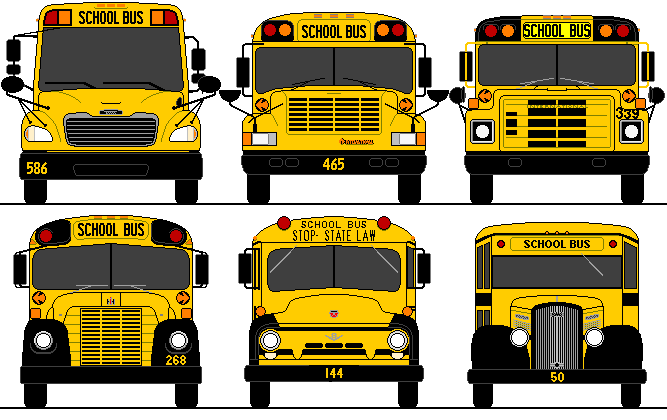The History of School Transportation in Mercer County, WV


An image of a school bus has a way of igniting pangs of nostalgia. These familiar, enduring vehicles are mainstays of Canadian and American school-age life, and have been so for generations.
It's difficult to find any mode of transportation more culturally omnipresent or more a part of shared societal experiences. Yet, the stories of school buses themselves...the constant rolling element in millions of peoples' lives...go untold.
I spent my formative years in Mercer County, West Virginia. I lived in a place where there weren't any tracks, trains, or streetcars passing through...so school buses were my formative introduction to the world of public transportation. Moreover, they fascinated me! Different buses hailed from different manufacturers, and different manufacturers brought about different associations in my mind. Wards were comfortable but claustrophobic to ride in, Waynes had rough seats but airy interiors, and Blue Birds were somewhere between both extremes. A wide amount of body, chassis, and configuration variation existed, and it seemed as though no two buses were exactly alike.
School buses were ephemeral: They didn't last forever, and
older equipment was continually being replaced by new.
Indicative of this was the county school board's perpetual fleet
numbering system...which advanced from the 300s to the 500s in
tandem with my own advancement from K to 12. Through the
passage of numbers and evolution in design, school buses became
inextricably linked to the passage of time.
What happened to the old buses? The hillsides of Appalachia were littered with them...and I often wondered what stories the people who rode or drove them could tell. But in an allegory in common with the rest of my childhood life, I felt as if I was alone in this interest, and no one else cared.
Looking back upon my time in Mercer County, I'm overcome by a swirl of emotions. Yet in spite of misgivings about my personal experiences there, some of my most consistently positive memories are of the times I spent riding the bus. Then as now, I was impressed by the logistics of school buses as an efficient, exceedingly safe form of transportation owned by the public, run by the public, and serving the public as beneficiaries and riders. It was shining proof that a community such as Mercer County could do the right thing and contribute to the collective betterment of society. The story of how this system came to be deserves to be told.
A few notes on terminology: School buses are "second stage"
vehicles produced by coupling the body of one manufacturer to the
chassis of another, and are referred to in this work by these
named combinations (i.e., Wayne/Chevrolet,
Carpenter/International). Most buses are "conventional" or
"Type C" in design, whereas "Type D" buses feature a transit-style
layout with a flat nose and forward control.